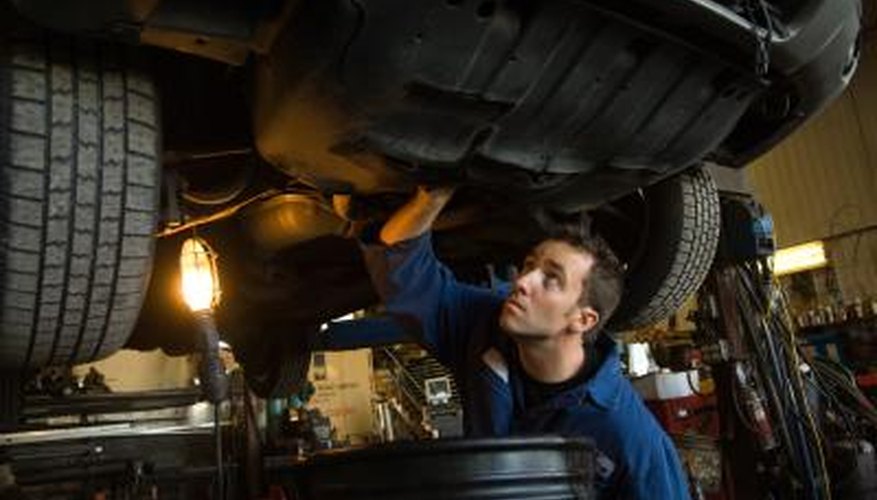The Mazda3 comes equipped with all-wheel anti-lock disc brakes.
The front brakes endure the most punishment during braking and are often in need of replacement more frequently than the rear pads.
Inspect the rear brakes regularly before the wear indicators begin to dig into the rear brake rotors. Catching the rear brake pads early will not only ensure safe motoring, it will save on the cost to repair or replace the rotors.
- The Mazda3 comes equipped with all-wheel anti-lock disc brakes.
- Catching the rear brake pads early will not only ensure safe motoring, it will save on the cost to repair or replace the rotors.
Park the Mazda on a flat surface. Allow ample space for you to work on both sides of the vehicle. Open the bonnet by pulling the bonnet release lever under the dashboard on the driver's side of the vehicle.
Lift the bonnet of the Mazda3 and remove the master cylinder cap located near the right side of the engine. Remove half of the brake fluid from the container with a syringe. You will need room in the reservoir for the brake fluid that will flow back as a result of opening the caliper pistons on the rear brakes. Lay the cap loosely over the maser cylinder.
- Lift the bonnet of the Mazda3 and remove the master cylinder cap located near the right side of the engine.
Loosen the rear wheel lug nuts with the lug wrench.
Place a jack under the frame at the back of the vehicle. Lift the back end of the car and support it with at least two jack stands. Place the stands under the axles for the best base of support.
Remove the lug nuts and take the rear wheels off of the vehicle.
Pull the spring clips from the caliper with a pair of needle-nose pliers.
Remove the dust covers over the two caliper pins. The covers can be removed by hand or with the aid of a flat head screwdriver.
Remove the two caliper pins with a 7mm Allen wrench.
Lift the caliper away from the rear rotor and remove the brake pad connected to the caliper piston by a thin metal clip. Slide the pad from the caliper by hand or use a flat head screwdriver to pry it from the caliper.
- Remove the lug nuts and take the rear wheels off of the vehicle.
- Slide the pad from the caliper by hand or use a flat head screwdriver to pry it from the caliper.
Slide the outer brake pad from the caliper bridge. The outer pad slides from the bridge with little force.
Check the brake assembly for wear and/or damage. Replace or repair any of the brake components that require servicing.
Place the piston compression tool onto the caliper and screw the piston into the side of the caliper. Remove the tool from the caliper once the Mazda's rear piston has been fully opened to allow for the extra bulk of the new brake pads.
Apply brake grease to the back panels of the new brake pads.
- Slide the outer brake pad from the caliper bridge.
- Apply brake grease to the back panels of the new brake pads.
Slide the inner rear brake pad onto the clips of the caliper (next to the piston).
- Slide the inner rear brake pad onto the clips of the caliper (next to the piston).
Place the outer piston into the slots of the caliper bridge.
Return the caliper over the caliper bridge and the rotor. Replace the caliper pins and screw them in with the 7mm Allen wrench.
Repeat the replacement process (Steps 6 through 16) for the brake pads on the opposite wheel hub.
Replace the rear wheels onto the wheel bolts and screw on the lugs by hand.
Lift the rear end of the Mazda3 and remove the jack stands from beneath the axles. Lower the rear tires back onto the ground and tighten the lug nuts with the lug wrench.
Lift the master cylinder cap and place a funnel into the reservoir. Fill the container with DOT-3 brake fluid. Remove the funnel and replace the master cylinder cap.
- Lift the master cylinder cap and place a funnel into the reservoir.
Close the bonnet.
Start the Mazda 3's engine. Press the brake pedal repeatedly until the pedal response returns to normal. The first few depressions will offer little resistance. As the brake fluid returns the caliper piston to the proper position, the pedal response will normalise.
